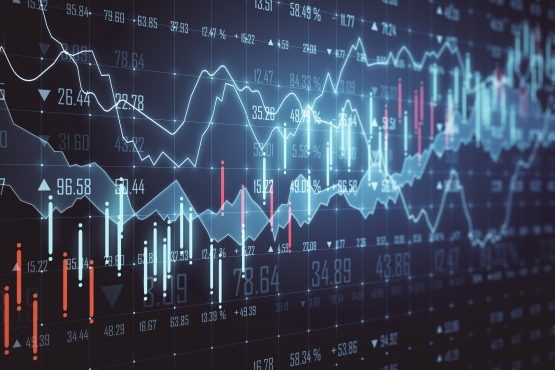In the fast-paced world of financial markets, traders often rely on a variety of tools and techniques to make informed decisions. For those engaged in Contracts for Difference (CFD) commodities trading, mastering technical analysis is essential. This guide aims to provide a comprehensive overview of technical analysis techniques explicitly tailored for CFD commodities traders.
Understanding Technical Analysis
Technical analysis involves analysing historical market data, primarily price and volume, to forecast future price movements. Unlike fundamental analysis, which examines underlying factors such as company financials, technical analysis focuses solely on market data. Its purpose is to identify trends and patterns that can help traders anticipate price direction.
At the core of technical analysis are several vital principles and assumptions. These include the notion that market prices reflect all available information, that price movements follow trends, and that history tends to repeat itself. Understanding these principles is crucial for effectively applying technical analysis techniques.
Technical analysis encompasses various methods and tools, each serving a specific purpose. Common types of technical analysis include trend analysis, support and resistance levels, moving averages, and momentum indicators like the Relative Strength Index (RSI) and Moving Average Convergence Divergence (MACD). Traders often combine multiple techniques to gain a comprehensive view of market conditions. Explore ADS securities for more information with their guides on how to conduct technical analysis and read charts.
Fundamentals of CFD Commodities Trading
CFDs are derivative products that allow traders to speculate on the price movements of underlying assets, such as commodities, without owning the assets themselves. Commodities, including precious metals, energy resources, and agricultural products, are among the most popular assets traded via CFDs due to their volatility and liquidity.
CFD commodities trading offers several advantages, including leverage, access to global markets, and the ability to profit from both rising and falling prices. However, it also carries inherent risks, such as leverage amplifying losses, overnight financing charges, and the potential for market volatility to trigger margin calls.
Given the dynamic nature of commodity markets, technical analysis plays a crucial role in CFD trading. By analysing price charts and indicators, traders can identify entry and exit points, gauge market sentiment, and manage risk effectively. Moreover, technical analysis can help traders capitalise on short-term price fluctuations that are common in commodity markets.
Basic Technical Analysis Techniques
Support and resistance levels are fundamental concepts in technical analysis. Support represents a price level where buying interest is strong enough to prevent further decline, while resistance denotes a level where selling pressure outweighs buying interest, halting price advances. Identifying these levels can help traders anticipate potential price reversals.
Trend analysis involves identifying the direction and strength of price movements over time. Trends can be classified as uptrends, downtrends, or sideways trends. By aligning trades with the prevailing trend, traders increase their chances of success. Standard tools for trend analysis include trendlines, moving averages, and trend indicators like the Average Directional Index (ADX).
Moving averages smooth out price data by calculating the average price over a specified period. They help traders identify trends, support and resistance levels, and potential reversal points. Common types of moving averages include simple moving averages (SMA) and exponential moving averages (EMA), each offering unique insights into price dynamics.
Advanced Technical Analysis Techniques
Fibonacci retracement is a popular tool used to identify potential support and resistance levels based on the Fibonacci sequence. Traders use Fibonacci retracement levels, such as 38.2%, 50%, and 61.8%, to anticipate price retracements within a broader trend. These levels often coincide with significant price levels, enhancing their predictive power.
The Moving Average Convergence Divergence (MACD) is a trend-following momentum indicator that consists of two lines: the MACD line and the signal line. Traders use the MACD to identify changes in trend direction, confirm trend strength, and generate buy or sell signals. Crossovers between the MACD line and the signal line often precede significant price movements.
Implementing Technical Analysis in CFD Commodities Trading
To apply technical analysis effectively, traders must have access to reliable charting platforms and a comprehensive set of technical indicators. Popular charting software, such as MetaTrader 4 (MT4) and TradingView, offer customizable charting tools and a wide range of technical indicators to suit individual trading preferences.
Technical analysis helps traders identify optimal entry and exit points based on price patterns, support and resistance levels, and momentum indicators. By combining multiple technical signals, traders can increase the probability of successful trades and minimise the risk of false signals. However, it’s essential to consider other factors, such as market fundamentals and risk management principles, when making trading decisions.
Conclusion
Technical analysis is a valuable tool for CFD commodities traders seeking to navigate dynamic and volatile markets. By understanding critical technical analysis techniques, implementing sound risk management practices, and continuously refining their trading strategies, traders can improve their odds of success and achieve their financial goals. Remember, mastering technical analysis is a journey that requires dedication, discipline, and a willingness to learn from both successes and failures. Embrace the learning process, stay resilient in the face of challenges, and let your commitment to excellence guide you towards trading mastery.









